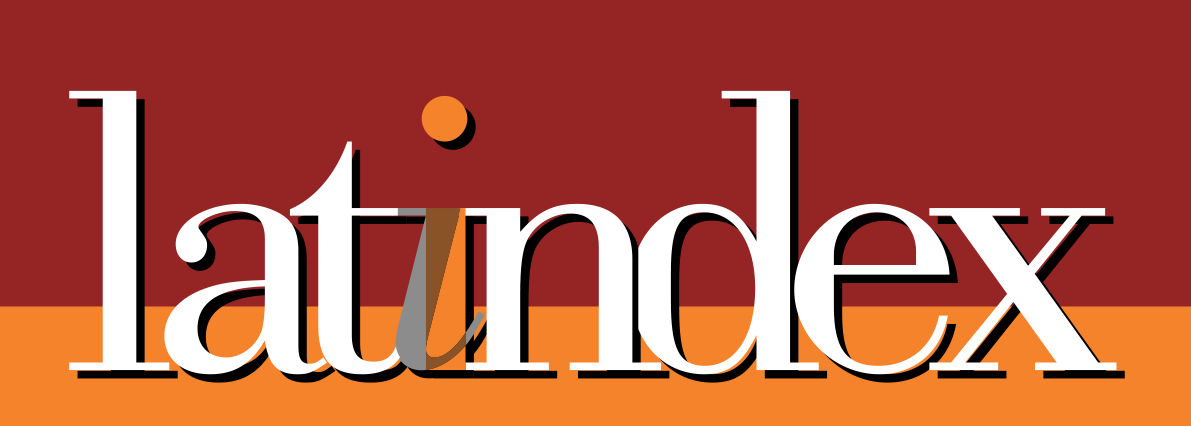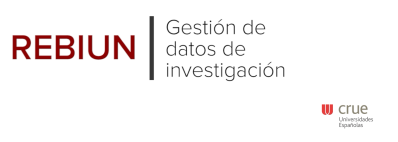La prueba de originalidad en obras creadas en tiempos de I.A. generativa: el papel de las instrucciones (prompts) en el derecho de autor y el destino del autor “de vieja escuela”
DOI:
https://doi.org/10.62407/rces.v3i5.141Palabras clave:
Inteligencia artificial- IA, derecho de autor, prueba, instrucciones, elecciones creativas, jurisprudenciaResumen
La inteligencia artificial (I.A.) generativa tiene un gran impacto en el derecho de autor. En particular, se ha planteado la cuestión de hasta qué punto el uso de instrucciones (prompts) puede dar lugar a la protección de los resultados de herramientas de I.A. A partir de los criterios para la protección del derecho de autor en la Unión Europea y en Estados Unidos, esta contribución analiza casos juzgados en ambos ordenamientos jurídicos, así como un caso piloto chino, y predice que, en un futuro próximo, es probable que el poder judicial confirmará, caso por caso, la protección del derecho de autor en obras creadas por personas físicas mediante la mera provisión de instrucciones. La I.A. generativa hace que sea imposible saber, a primera vista, si una obra está creada por una persona física con suficientes intervenciones creativas y, por lo tanto, está protegida por el derecho de autor. Dado el riesgo de comportamientos estratégicos de partes privadas que oculten el uso de I.A. y/o reescriban las instrucciones usadas a posteriori, parece inevitable que la judicatura se aleje de la premisa implícita de que lo que parece creativo debe haber sido creado por un autor humano mediante decisiones creativas. Probablemente, a los (pretendidos) autores se les pedirá cada vez más que demuestren que tomaron tales decisiones creativas. Esto, a su vez, corre el riesgo de aumentar la carga de la prueba para los autores “de vieja escuela” que no utilizan I.A.
Citas
Abbamonte, G. B. (2021). The rise of the artificial artist: AI creativity, copyright and database right. European Intellectual Property Review, 702-709. https://uk.westlaw.com/Document/I60CE63102C7F11ECADB794FE7D4F3720/View/FullText.html
Abbott, R., & Rothman, E. (2023). Disrupting Creativity: Copyright Law in the Age of Generative Artificial Intelligence. Florida Law Review, 75(6), 1141-1202. https://heinonline.org/HOL/Page?handle=hein.journals/uflr75&collection=usjournals&id=1153&startid=&endid=1214
Abrams, H. B., & Ochoa, T. T. (2023). Law of Copyright. Clark Boardman Callaghan. https://uk.westlaw.com
Baumann, M. (2023). Generative KI und Urheberrecht – Urheber und Anwender im Spannungsfeld. Neue Juristische Wochenschrift, 3673-3678. http://beck-online.
beck.de/Bcid/Y-300-Z-NJW-B-2023-S-3673-N-1
Beconcini, P. (2024). AI-Generated Works in China: The “Japanese Girl” and Comparison to US Precedent. IP Litigator, 2024(July/August), 16-22. https://www.proquest.com/trade-journals/ai-generated-works-china-japanese-girl-comparison/docview/3090980584/se-2?accountid=11077
Blok, P. (2017). The inventor's new tool: artificial intelligence - how does it fit in the European patent system? European Intellectual Property Review, 39(2), 69-73. https://uk.westlaw.com/Document/IFD69BE70DDDF11E6AE76C667306ED75D/View/FullText.html
Bonadio, E., McDonagh, L., & Dinev, P. (2021). Artificial intelligence as inventor: exploring the consequences for patent law. Intellectual Property Quarterly, 48-66. https://uk.westlaw.com/Document/I78E8546064A711EB940BFB3CBB61FC76/View/FullText.html
Bulayenko, O., Quintais, J. P., Gervais, D., & Poort, J. P. (2022). AI Music Outputs: Challenges to the Copyright Legal Framework. https://doi.org/10.2139/ssrn.4072806
Cabay, J. (2019). Droit d’auteur et intelligence artificielle: comparaison n’est pas raison. Entertainment & Law, 2019(6), 307-325. https://www.stradalex.com/nl/sl_rev_utu/
toc/enter_2019_6-nl/doc/enter2019_6p307
Cattoor, S., Letten, I., & Loose, A. (2020). Inventorship of AI made inventions. Intellectuele rechten - Droits intellectuels, 7-17. https://jura.kluwer.be/secure/Document
View.aspx?id=dn300222336&scrollid=dn300222336&NavSearchId=10370288&state=changed
Díaz-Limón. (2016). Daddy’s Car: la inteligencia artificial como herramienta facilitadora de derechos de autor. Revista La Propiedad Inmaterial, 22, 83-100. https://doi.org/
18601/16571959.n22.06
Dornis, T. W. (2019). Der Schutz künstlicher Kreativität im Immaterialgüterrecht. GRUR, 1252-1264. http://beck-online.beck.de/Bcid/Y-300-Z-GRUR-B-2019-S-1252-N-1
Dornis, T. W. (2021a). Die „Schöpfung ohne Schöpfer“ – Klarstellungen zur „KI-Autonomie“ im Urheber- und Patentrecht. GRUR, 784-792. https://beck-online.
beck.de/Bcid/Y-300-Z-GRUR-B-2021-S-784-N-1
Dornis, T. W. (2021b). Of ‘authorless works’ and ‘inventions without inventor’ – the muddy waters of ‘AI autonomy’ in intellectual property doctrine. European Intellectual Property Review, 570-585. https://uk.westlaw.com/Document/I5AB6F810F71011E
BA0E7B72A4547540F/View/FullText.html
Ducato, R., & Strowel, A. (2021). Ensuring text and data mining: remaining issues with the EU copyright exceptions and possible ways out. European Intellectual Property Review, 43, 322-337. https://uk.westlaw.com/Document/I1ABE8A009F1011EB
BDB8D028861A/View/FullText.html
Engelfriet, A., & Visser, D. J. G. (2024). Werkt de mijnwerk opt-out voor mijn werk? Auteursrecht, 8-14. https://www.auteursrecht-online.nl/art/90-6131_Werkt-de-mijnwerk-opt-out-voor-mijn-werk
Friedmann, D. (2024). Copyright as Affirmative Action for Human Authors Until the Singularity. GRUR International, 1-2. https://doi.org/10.1093/grurint/ikad133
Gabison, G. A. (2020). Who holds the right to exclude for machine work products? Intellectual Property Quarterly, 20-43. https://uk.westlaw.com/Document/
I3AAFEB4043C411EA947DFD3616037DDC/View/FullText.html
Geiger, C. (2024). Elaborating a Human Rights-Friendly Copyright Framework for Generative AI. IIC International Review of Intellectual Property and Competition Law, 1129-1165. https://doi.org/10.1007/s40319-024-01481-5
Geiregat, S. (a publicarse en 2024). Bewijs van originaliteit en houderschap in het post-GenAI-tijdperk. Auteurs & Media.
Geiregat, S. (a publicarse en 2025). Generatieve AI en auteursrecht: Bewijs van inbreuken en auteurschap in tijden van ChatGPT, DALL-E en co. In Economisch recht. Verslagboek van de 50e postuniversitaire cyclus Willy Delva (título provisional). Intersentia.
Ginsburg, J. (2018). People not machines: Authorship and What It Means in the Berne Convention. IIC International Review of Intellectual Property and Competition Law, 49, 131-135. https://doi.org/10.1007/s40319-018-0670-x
Guadamuz, A. (2024). A Scanner Darkly: Copyright Liability and Exceptions in Artificial Intelligence Inputs and Outputs. GRUR International, 111-127. https://doi.org/
1093/grurint/ikad140
Guarda, P., & Trevisanello, L. (2021). Robots as artists, robots as inventors: is the intellectual property rights world ready? European Intellectual Property Review, 43(11), 740-746. https://uk.westlaw.com/Document/I6092B9A02C7F11ECADB794FE7D4F37
/View/FullText.html
Hartmann, C., Allan, J. E. M., Hugenholtz, B. P., Quintais, J. P., & Gervais, D. (2020). Trends and Developments in Artificial Intelligence: Challenges to the Intellectual Property Rights Framework. https://doi.org/10.2759/458120
He, T. (2024). AI Originality Revisited: Can We Prompt Copyright over AI-Generated Pictures? GRUR International, 299-307. https://doi.org/10.1093/grurint/ikae024
Heinze, C. (2024). Beweis menschlicher Urheberschaft, Urhebervermutung und Täuschung über Werkeigenschaften bei Erzeugnissen künstlicher Intelligenz – Dokumentationspflichten ante portas? Zeitschrift für Urheber- und Medienrecht, 184-189. http://beck-online.beck.de/Bcid/Y-300-Z-ZUM-B-2024-S-184-N-1
Hofmann, F. (2024). Retten Schranken Geschäftsmodelle generativer KI-Systeme? Vortrag im Rahmen des Symposions »Generative K.I. und das Urheberrecht – Eine komplizierte Beziehung« des Instituts für Urheber- und Medienrecht am 10.11.2023 in München. Zeitschrift für Urheber- und Medienrecht, 166-174. http://beck-online.beck.de/Bcid/Y-300-Z-ZUM-B-2024-S-166-N-1
Iaia, V. (2022). To Be, or Not to Be… Original Under Copyright Law, That Is (One of) the Main Questions Concerning AI-Produced Works. GRUR International, 793-812. https://doi.org/10.1093/grurint/ikac087
Kraetzig, V. (2024). KI-Kunst als schöpferische Zerstörung. Neue Juristische Wochenschrift, 697-702. http://beck-online.beck.de/Bcid/Y-300-Z-NJW-B-2024-S-697-N-1
Margoni, T., & Kretschmer, M. (2022). A Deeper Look into the EU Text and Data Mining Exceptions: Harmonisation, Data Ownership, and the Future of Technology. GRUR International, 685-701. https://doi.org/10.1093/grurint/ikac054
Moerland, A. (2024). Intellectual Property Law and AI. In E. Lim & P. Morgan (Eds.), The Cambridge Handbook of Private Law and Artificial Intelligence (pp. 362-383). Cambridge University Press. https://doi.org/10.1017/9781108980197
Murray, M. D. (2023). Generative AI Art: Copyright Infringement and Fair Use. SMU Sci. & Tech. L. Rev., 26, 259-316. https://doi.org/10.25172/smustlr.26.2.4
Murray, M. D. (2024). Tools Do Not Create: Human Authorship In the Use of Generative Artificial Intelligence. Case Western Reserve Journal of Law, Technology and the Internet, 15(1), 76-105. https://heinonline.org/HOL/P?h=hein.journals/caswestres15
&i=77
Myers, G. (2023). Artificial Intelligence and Transformative Use after Warhol. Wash. & Lee L. Rev., 81, 1-29. https://heinonline.org/HOL/P?h=hein.journals/waleelro81&i=1
Oda, B. (2023). No Ghost in the Machine. Scitech Lawyer, 20(1), 20-27. https://www.proquest.com/scholarly-journals/no-ghost-machine/docview/29041681
/se-2?accountid=11077
Owoeye, O., & Ajayi, O. (2023). Artificial intelligence and the patentability of AI inventions. European Intellectual Property Review, 228-235. https://uk.westlaw.com/Document/
IC96EAF10BC1611ED9820BC5713950B45/View/FullText.html
Patry, B. (2024). Patry on Copyright. Thomson West.
Pesch, P. J., & Böhme, R. (2023). Artpocalypse now? – Generative KI und die Vervielfältigung von Trainingsbildern. GRUR, 997-1007. http://beck-online.beck.de/
Bcid/Y-300-Z-GRUR-B-2023-S-997-N-1
Rački Marinković, A. (2024). Liability for AI-related IP infringements in the European Union. Journal of Intellectual Property Law & Practice, 784-792. https://doi.org/10.1093/jiplp/jpae061
Romero Guido, A. V. (2022). Análisis jurídico del reconocimiento de la inteligencia artificial como inventor a la luz del derecho de patentes de Nicaragua. Revista Científica de Estudios Sociales, 1, 224-269. https://doi.org/10.62407/rces.v1i1.15
Rosati, E. (a publicarse en 2024). Infringing AI: Liability for AI-generated outputs under international, EU, and UK copyright law. European Journal of Risk Regulation. http://dx.doi.org/10.2139/ssrn.4946312
Senftleben, M. R. F., & Buijtelaar, L. (2020). Robot creativity: an incentive-based neighbouring rights approach. European Intellectual Property Review, 42(12), 797-812. https://uk.westlaw.com/Document/IA6323040286F11EBB9E2BD977533EFC
E/View/FullText.html
Torrance, A. W., & Tomlinson, B. (2023). Training Is Everything: Artificial Intelligence, Copyright, and ‘Fair Training’. Dickinson L Rev, 128, 233-256. https://heinonline.org/HOL/P?h=hein.journals/dknslr128&i=239
Tull, S. Y., & Miller, P. E. (2018). Patenting Artificial Intelligence: Issues of Obviousness, Inventorship, and Patent Eligibility. RAIL The Journal of Robotics, Artificial Intelligence & Law, 1(5), 313-326. https://heinonline.org/HOL/P?h=hein.journals/
rail1&i=324
US Copyright Office. (16 de marzo de 2023). Copyright Registration Guidance: Works Containing Material Generated by Artificial Intelligence. Federal Register, 88, 16190-16194. https://heinonline.org/HOL/P?h=hein.fedreg/088051&i=27
Vanherpe, J. (2021). AI and IP: a Tale of Two Acronyms. In J. De Bruyne & C. Vanleenhove (Eds.), Artificial Intelligence and the Law (1 ed., pp. 207-239). Intersentia.
Vanherpe, J. (2023a). AI and IP: Great Expectations. In J. De Bruyne & C. Vanleenhove (Eds.), Artificial Intelligence and the Law (2 ed., pp. 233-267). Intersentia. https://www.stradalex.com/nl/sl_mono/toc/INTERS702525/doc/INTERS702525_010
Vanherpe, J. (2023b). Paris Congress ALAI June 22‑23, 2023: Artificial intelligence, copyright and related rights. Answers Belgium. Auteurs & Media, 143-158. https://www.stradalex.com/nl/sl_rev_utu/toc/am_2023_1-nl/doc/am2023_1p143
Vehar, F., & Gils, T. (2020). I’m sorry AI, I’m afraid you can’t be an author (for now). Journal of Intellectual Property Law & Practice, 15(9), 718-726. https://doi.org/10.1093/jiplp/jpaa106
Verma, A. (2023). The copyright problem with emerging generative AI. Journal of Intellectual Property Studies, 7(2), 69-84. https://heinonline.org/HOL/P?h=hein.
journals/jnloitl7&i=194
Visser, D. J. G. (2023). Robotkunst en auteursrecht. Nederlands Juristenblad, 504-515. https://www.inview.nl/document/ide39e8fd5dd3a46b8b9fbad11c65a8622?ctx=WKNL_CSL_85
Visser, D. J. G. (2024a). AI (Act) en auteursrecht. Bedrijfsberichten, 48-54. https://www.inview.nl/document/id56b73fa822e4452dafe1500f82bcdaf0?ctx=WKNL_CSL_15
Visser, D. J. G. (2024b). Creativiteit moet voortaan worden bewezen. Tijdschrift voor Internetrecht, 108-111.
von Welser, M. (2023a). ChatGPT und Urheberrecht. GRUR-Prax, 57-59. http://beck-online.
beck.de/Bcid/Y-300-Z-GRURPRAX-B-2023-N-03026
von Welser, M. (2023b). Generative KI und Urheberrechtsschranken. GRUR-Prax, 516-520. http://beck-online.beck.de/Bcid/Y-300-Z-GRURPRAX-B-2023-N-18029
Wymeersch, P. (2023-24). De toepassing van het auteursrecht op AI-output. Rechtskundig Weekblad, 1562-1570. https://rw.be/artikels/13715
Wymeersch, P. (2024). Terms of use on the commercialisation of AI-produced images and copyright protection. European Intellectual Property Review, 374-381. https://uk.westlaw.com/Document/I65927700157111EF9773EFAC2D3AF173/View/FullText.html
Descargas
Publicado
Cómo citar
Número
Sección
Licencia

Esta obra está bajo una licencia internacional Creative Commons Atribución-NoComercial-CompartirIgual 4.0.


















